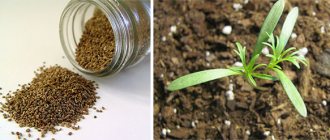Autumn is a wonderful time to replant plants, including indoor plants. If you replant in the fall, the flowers will be provided with good conditions for growth and flowering, because some indoor plants bloom even in the winter cold. When plants are transplanted into new soil rich in microelements, they grow better and become stronger.
However, not all flowers are recommended to be replanted in the autumn. Which plants need to be replanted in autumn, and which are best left until spring? Below you can find tips and tricks for replanting indoor flowers.
What flowers are best to replant in the fall?
Transplantation is not always well tolerated by plants, and therefore it is important to know which of them need to be replanted and when. Plants blooming in winter will have time to get used to the new place, which is a big plus. Flowers such as chlorophytum and asparagus, for example, are replanted even in winter. But there are plants for which autumn replanting is contraindicated.
What plants are replanted and pruned in the fall?
In late August-early September and until the coldest weather, it is good to replant bulbous and small-bulbous plants if they were planted in the ground. It also makes sense to transplant flowers that “migrated” to us from the tropics. Then they will quickly take root.
It is worth paying special attention to young seedlings of large plants up to two years old, for example, palm trees. They definitely need replanting to get the nutrients they need.
Usually the following are replanted in the fall: ficus, hibiscus, phlox, daylilies, bush asters, irises, oleander, dracaena.
List of flowers that are replanted in autumn, with explanations
Alocasia, which is an excellent ornamental plant, has superficial deep roots. She prefers tall, narrow containers and it is very important to ensure that the soil does not become soggy.
Gloxinia is replanted in the fall, as it goes into a dormant period in winter. Autumn replanting will give it the opportunity to gain strength and delight with abundant flowering.
When is the best time to replant perennials?
Transplantation and propagation by dividing rhizomes is carried out in spring or autumn:
- In the first case, plants best tolerate the procedure carried out from the second half of April to the first days of May.
- The second time it is possible to move the perennials to a new location from August to September.
The choice of one option or another depends on the planted crop. It is better to replant plants that bloom in the second half of summer with the onset of warm weather, and, conversely, when buds appear in the spring, replanting is postponed until autumn.
Many gardeners prefer to devote the end of summer and beginning of autumn to caring for perennials for the simplest and most obvious reason. During this period, they have more free time for such pleasant, but rather troublesome work.
However, experienced flower growers associate serious risks with autumn transplantation. If you are a little late, then perennials that did not take root again before the cold weather may suffer in winter or even die. Therefore, the procedure is always consistent with the long-term weather forecast, taking into account the frost resistance of crops and the climatic characteristics of the region. It is better if during transplantation there is dry weather with an air temperature of at least 12–15 degrees.
How to do a transplant?
It is better to replant plants in two stages: first prepare the flowers, and then carry out the replanting itself.
First stage. Preparing for transplant
To begin, the plants are removed from the pots. To do this, they are watered abundantly. Some time later, the pot is turned over and knocked on the bottom so that the plant separates. You can first separate the soil from the pot using a knife.
Then you should tackle the root system. Small roots are untangled, rotten parts are cut off and sprinkled with crushed charcoal. The bulbs must be handled very carefully. If they are damaged, the plant may die.
Now we need to take care of the container. A new pot is usually bought a little larger and deeper than the previous one, three to four centimeters, but no more. If it significantly exceeds the previous capacity, there will be a strong risk of rotting of the root system. In this case, more drainage is poured than usual.
Time for a change
For gardeners, autumn replanting is an opportunity to carry out redevelopments in the garden, when time and temperature allow, creating borders from rare and expensive plants grown and divided by yourself, such as hostas, daylilies, and kniphofia. After all, they are often purchased in single copies due to the high cost of planting material. However, you should not abuse this opportunity; you should remember that perennials of this type reach the peak of their decorativeness mainly in the fifth year. They are divided without harming flowering no earlier than this age.
Autumn replanting of peonies at a summer cottage is necessary for the health of plants every 5-7 years. It is recommended to divide phloxes once every three to four years, since the heel part of old bushes becomes lignified, the flowers become smaller, and the habit becomes concentric-peripheral. Plants with a taproot system (levywort, mignonette) tolerate division very poorly even in adulthood, so the best option in this case is to replant every five years.
How is transplantation different from transshipment?
In addition to transplantation, there is another way to move plants from one container to another. It is called transshipment. How does it differ from a transplant and in what cases is it needed? Transshipment is usually done for:
- rapidly growing young plants;
- large plants, when the risk of their death during transplantation is too great;
- suffering from the destruction of a clod of earth.
When transshipping, only change the smaller pot to a larger one, without replacing the soil. The roots are removed from the pot along with a lump of earth, but are not cleared of soil. The entire lump is placed in a new pot and only a little soil is added on top to make the flowers more spacious.
Unlike replanting, transshipment can be done for any indoor plants. This is especially true for those flowers that “fall asleep” in winter. It is better to move them from cramped containers to more spacious ones. Replanting in the usual way, if there is no need, such flowers are not necessary. And transshipment will only give advantages: the roots are not disturbed and there is an opportunity for growth and development.
Perennial flowers: rules for dividing a bush
It is better to start dividing and replanting the bush on a cloudy day. The day before transplanting, the plant should be watered abundantly. So that the leaves and roots have good turgor and can withstand stress more easily.
Also, a day before transplanting, prepare planting holes, filling them with phosphorus-potassium fertilizers or autumn complex fertilizer. You can add wood slag. Nitrogen fertilizers should not be applied in the fall. Because they can provoke the growth of new shoots. Which will not have time to ripen before the cold weather and will die, thereby weakening the bush.
The transplanted bush is dug up widely, trying not to damage the root system. Carefully remove from the soil. Shake off the ground. Carefully inspect the roots and remove dead, diseased and rotten ones with a sharp knife.
Then the locations of the incisions are determined into divisions so that each one has at least three healthy kidneys. Divide the bush with a shovel, knife or pruning shears.
The cuttings are treated with a fungicide solution, for example, “Maxim” or a pink solution of potassium permanganate. Then it would be a good idea to powder the roots and cuts with ash.
The planted sections are watered abundantly, the soil under them is mulched with mowed lawn grass, high-quality compost, and chopped straw. Plantings are covered with spunbond from hot sun rays.
The technology for planting new plants is exactly the same. It’s just important not to miss the optimal planting dates. Because plants planted at a later date will not have time to adapt and take root. As a result, they will die in winter or emerge from wintering extremely weakened. And you shouldn’t expect full flowering in the new season.
Contraindications for transplantation
There are not many contraindications to transplantation, but they should be taken into account.
- Problems due to the fact that the plant is too large . For example, a ficus will grow up to two meters. Replanting such a plant is problematic. Therefore, instead of replanting, they do the following: remove the top layer of soil and replace it with a new one. So the plant does not need to be replanted, and it receives nutrients from the new soil.
- Transplant timing. Under no circumstances should you replant plants if they have not yet bloomed. Firstly, all the flowers will dry out and fall off, and secondly, the flower will take a long time to recover and become sick.
- Too delicate root system . There are indoor plants with fragile roots that are easily damaged when transplanted. Then it is better to transship so as not to disturb the root system. It is better not to touch the roots of plants such as begonias, fittonias, ferns, and some types of palm trees. They are carefully removed from the pots without cleaning the roots.
Frequency of replanting perennial ornamental crops
Each perennial has its own time when it is time for it to leave its home.
The shortest interval between transplants is for feathery carnations, coreopsis, pyrethrum, some varieties of perennial violets and primrose (perennial primrose planting and care with photo). The same applies to thyme and oregano, which are often planted in flowerbeds and mixborders. After 2–3 years, these plants need to be replanted. The reason for the rapid loss of decorativeness is that, as they age, the roots of plants begin to rise above the ground level, and a bald patch of last year's dried roots and stems forms in the center of the curtain. This effect leads to a deterioration in the nutrition of the living parts of the perennial; its development occurs only on the periphery and gradually fades. Therefore, adult clumps are periodically dug up, carefully divided, and the resulting parts are planted, sprinkled with fertile soil on top.
Beloved by many for their luxurious aroma and elegant flowers, white lilies, other decorative varieties of lilies, as well as irises with a shallow root system are replanted a year or two less often.
If this is not done, after 4-5 years the scaly bulbs of lilies and rhizomes of irises are so buried in the soil that the sprouts that form on them turn out to be weak and refuse to bloom.
Up to 6–7 years, hostas, herbaceous peonies, perennial phlox, astilbe and delphiniums, unpretentious bright daylilies and other crops grow in one place without any visible problems, in which, when dug up, powerful rhizomes are found that provide the plants with everything they need for growth and flowering for many years. When transplanting a large specimen, you can and should disassemble it to obtain young planting material.
Why is planting and replanting in the fall in some cases preferable to spring?
- The plant begins to bloom the following year.
- Some species prefer autumn sowing of seeds in the ground “before winter”. They need mandatory stratification. This boosts the natural immunity of flowers, hardens the seed and provides powerful energy for growth in the spring.
- Seeds that have undergone stratification germinate quickly, withstand return frosts more easily and bloom 1–2 weeks earlier than their counterparts grown by seedlings.
I'll tell you which flowers should be planted in open ground in the fall..
Late planting: what conditions must be ensured?
The permissible landing time is not determined by calendar dates. It is unacceptable to look at the calendar and say with confidence: “You can plant today, but you can’t plant tomorrow.” Even if you find recommendations regarding numbers, you should only take them as generally accepted values. They are followed because, through long-term observations, it has been established that plants planted precisely at these times take root.
In addition to dates, the following are important:
- climatic conditions in the region;
- actual soil condition;
- type of root system.
It often happens that during a long, warm autumn, bulbous plants manage to sprout before the onset of cold weather. Perhaps, even in this case, the flowers will overwinter well, and after that they will display their varietal qualities to the maximum.
Planting under fallen snow is also allowed, but only if the ground underneath has not yet frozen and is quite loose, or at least lifted with a shovel. Please note that perennials with a closed root system can be planted until November. But otherwise, you need a reserve of time in order to grow and survive the winter safely.
It is also worth noting the fact that in winter, when the plant is dormant, the use of growth stimulants is extremely undesirable. Such drugs can harm them. The situation is similar with watering. If plants are planted late, there is no need to water them.











